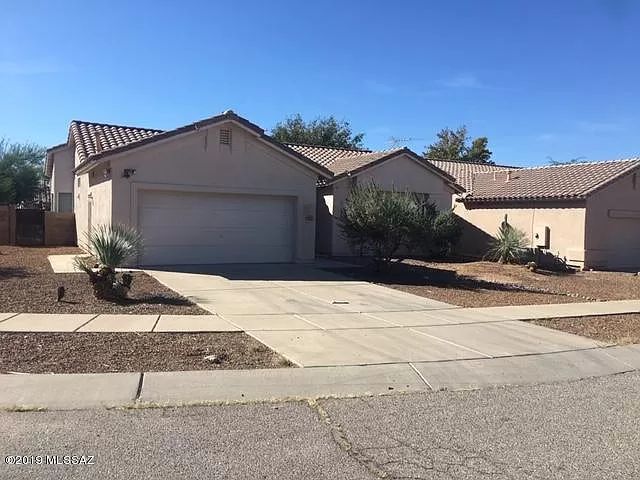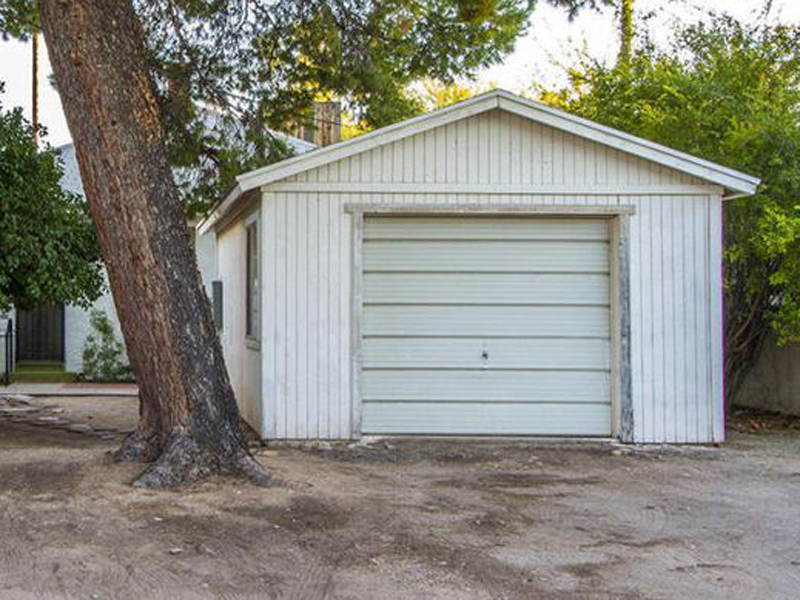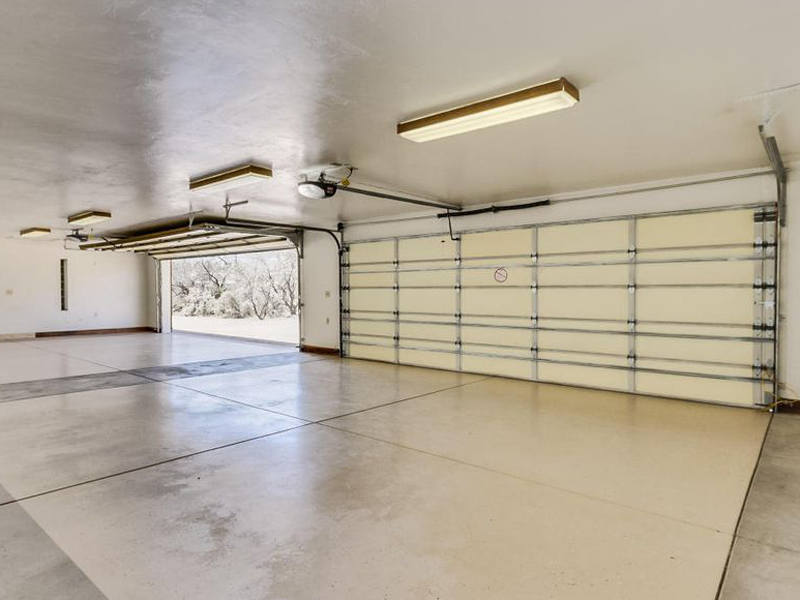Is Your Garage Door Stuck? Right here's What to Do First
When your garage door won't open, start with these vital safety and security checks before attempting any kind of fixings. First, ensure no person is standing near the door and that vehicles are clear of the opening. Search for evident signs of damages like broken panels, curved tracks, or hanging cords. If you see a snapped spring or seriously harmed elements, quit promptly and call a specialist—-- these repair work require customized devices and expertise to deal with safely.

Check These 6 Things Before Calling a Professional
Before assuming you need costly repairs, go through this quick diagnostic list that fixes most garage door issues:
-
Source of power: Confirm the opener is connected in and the electrical outlet is working
-
Remote batteries: Replace dead batteries in your remote
-
Hand-operated lock: Inspect if somebody accidentally engaged the manual lock
-
Blockages: Try to find particles obstructing the door's path or sensors
-
Emergency situation launch: Guarantee the red emergency situation cable hasn't been drawn
-
Breaker: Validate the garage circuit hasn't stumbled
These simple checks settle roughly 70% of garage door issues without requiring specialist treatment.
10 Usual Reasons Your Garage Door Will Not Open Up
Comprehending why your garage door opener isn't working assists you pick the appropriate service. Below are one of the most frequent causes house owners experience:
Dead remote batteries represent the most basic repair—-- when batteries pass away, the remote can not send out signals to the opener. Power blackouts or tripped breakers reduced electricity to the motor. Broken springs stop the door from lifting appropriately and call for immediate professional focus. Sensor misalignment causes security systems to block door operation. Track obstructions quit rollers from relocating smoothly. Electric motor overload triggers automatic shutoffs when the opener identifies resistance. Restriction switch issues perplex the opener concerning door setting. Wire damage disrupts the lifting device. Weather-related concerns influence door motion during extreme temperature levels. Component wear from age gradually lowers system efficiency.
Issue # 1: Dead Push-button Control Batteries
When your wall surface button functions yet your remote does not, dead batteries are typically the culprit. A lot of garage door remotes use either 3-volt lithium or 12-volt alkaline batteries. Remove the back cover of your remote and examine the battery type. Change with fresh batteries and test the remote. If it still does not work, you may need to reprogram it to your opener. Consult your opener's guidebook for particular reprogramming directions, as the procedure varies by supplier.
Problem # 2: Power Supply Issues
Garage door power problems commonly come from loose links or tripped circuits. Examine that the opener is strongly connected into its electrical outlet—-- resonance can loosen links in time. Test the outlet with an additional tool to confirm it's functioning. Analyze your home's breaker box for tripped circuits, particularly if you have actually experienced storms or power changes. GFCI outlets may have stumbled and require resetting. If the opener has power however will not respond, the problem most likely lies elsewhere in the system.
Problem # 3: Broken or Damaged Springs
Damaged garage door springs are amongst the most hazardous parts to take care of. If you hear a loud bang from your garage or discover the door really feels extremely hefty when attempting to lift by hand, a springtime has most likely snapped. Torsion springs run flat above the door, while extension springs rest on either side. Never attempt springtime fixings on your own—-- these components save remarkable tension that can cause serious injury or death. Expert substitute generally costs $150-$300 yet ensures your security.
Issue # 4: Obstructed Safety And Security Sensing Units
Modern garage doors include security sensors that stop closure when items are identified. These sensing units can stop the door from opening up if they're dirty, misaligned, or blocked by particles. Clean sensor lenses with a soft fabric and make sure absolutely nothing blocks the unnoticeable beam between them. Check that sensors are effectively aligned—-- most have indicator lights that reveal connection condition. Sensing unit troubles commonly solve with straightforward cleansing and adjustment.
Trouble # 5: Track Obstructions or Damage
Garage door tracks overview rollers as the door moves up and down. Dust, particles, old oil, or tiny things can jam the system. Inspect tracks visually and remove any obstructions with a brush or cloth. Try to find dents, flexes, or bending that can hamper smooth operation. Minor track adjustments are possible for helpful house owners, yet considerable damages calls for specialist repair service to stop additional issues or safety and security risks.
Issue # 6: Garage Door Opener Motor Issues
When the garage door motor runs however the door does not relocate, a number of problems could be responsible. The motor might be overloaded and turning off as a precaution. Gear wear, especially in older units, can avoid appropriate procedure. Chain or belt drive issues affect power transmission. If you hear unusual grinding, clicking, or humming noises, stop using the opener right away. Motor fixings usually cost greater than replacement, especially for systems over 10 years old.
Detailed Do It Yourself Troubleshooting Overview
Follow this systematic technique to garage door repairing while focusing on security throughout the procedure:
Step 1: Check the wall button first. If it functions yet the remote does not, focus on remote problems. If neither works, check power supply.
Action 2: Take a look at the manual release cable. If it's been pulled, the opener is disengaged from the door. Push the trolley back to reconnect.
Step 3: Manually test the door by disengaging the opener and attempting to lift the door by hand. It needs to move smoothly and stay in place when half-open.
Tip 4: Inspect noticeable components for damage, paying special interest to springs, cable televisions, and tracks.
Tip 5: Check all safety and security functions consisting of sensing units, restriction switches, and auto-reverse functions.
Step 6: Examination various controls (remote, wall surface button, keypad) to separate the issue resource.
Constantly put on safety glasses and work handwear covers when doing inspections, and never ever attempt repairs on springs or high-tension elements.
When to Call an Expert vs. DIY Solutions

Knowing when to call a garage door specialist versus attempting DIY repair work shields both your safety and security and your wallet. Manage these concerns on your own: dead remote batteries, power supply problems, minor track cleaning, sensing unit cleansing and placement, and basic lubrication.
Never ever attempt these repair work yourself: spring substitute or modification, cord repairs, major track realignment, electrical circuitry issues, opener electric motor substitute, or any kind of repair entailing high-tension components. Expert service technicians have specialized devices, training, and insurance to manage harmful repairs safely.
Take into consideration repair service expenses versus substitute prices, specifically for doors over 15 years old. Modern garage doors use better safety functions, power performance, and dependability than older models.
Emergency Garage Door Solutions
When you're stuck with a garage door that will not open and need instant access, adhere to these emergency procedures:
Guidebook Operation: Pull the red emergency situation release cable to disengage the opener. This enables manual procedure yet calls for proper strategy to avoid injury. Raise the door slowly and evenly, utilizing leg muscles instead of your back. Most residential doors evaluate 100-150 extra pounds, making them convenient for many grownups.
Temporary Solutions: If the door opens up by hand however will not keep up, prop it open with sawhorses or clamps—-- never ever use your body or cars as supports. For doors that will not shut entirely, guarantee the opening is secured if you should leave.
Emergency situation Solution: Lots of garage door business offer 24/7 emergency solution for scenarios involving safety issues, trapped lorries, or full system failings. While a lot more expensive than routine service calls, emergency fixings offer prompt options when needed most.
Safety Caution: What NOT to Do
Garage door security needs understanding harmful fixings that ought to never ever be attempted by homeowners:
Never ever attempt to fix springtimes—-- they save enough power to create deadly injuries when they snap or are improperly handled. Don't compel a stuck door—-- this can harm the opener, tracks, or door panels, producing more expensive problems. Stay clear of bypassing safety features—-- sensors and auto-reverse systems stop serious injuries and residential or commercial property damages.
Don't overlook odd sounds—-- grinding, scuffing, or banging noises show problems that intensify with time. Never ever use the door if wires are torn or damaged—-- the door might drop suddenly. Do not try electric repair work unless you're a qualified electrician—-- garage door openers use both 120V home present and low-voltage control circuits.

Precautionary Maintenance to Avoid Future Problems
Routine garage door upkeep avoids most usual issues and expands system life expectancy substantially:
Monthly Jobs: Visual examination of all parts, examining auto-reverse safety features, examining and tightening equipment, and cleansing tracks and sensing units.
Quarterly Tasks: Lubricating all moving get rid of ideal garage door lubricating substance, testing manual procedure, and checking climate sealing.
Annual Tasks: Specialist evaluation and tune-up, springtime modification if needed, and opener upkeep including belt or chain change.
Seasonal Jobs: Planning for weather extremes, examining insulation, and adjusting opener settings for temperature level adjustments.
Constant maintenance expenses far less than emergency repair services and makes sure dependable operation year-round.
Garage Door Won't Open FAQs
Why won't my garage door open with the remote however collaborates with the wall switch?
This usually suggests dead remote batteries, signal interference, or the need to reprogram the remote. Examine batteries first, then consult your opener manual for reprogramming guidelines.
Can I manually open my garage door if the power is out?
Yes, draw the red emergency situation release cord to disengage the opener, then raise the door by hand. Be prepared for the door's complete weight and lift with correct method to stay clear of injury.
Exactly how do I understand if my garage door springtime is damaged?
Indications include a loud bang from the garage, the door feeling incredibly hefty when raising manually, visible spaces in the springtime coils, or the door just opening a few inches prior to stopping.
Is it risk-free to use my garage door if it will not open up right?
No, partial procedure indicates mechanical troubles that can worsen instantly. Stop utilizing the door and have it inspected by an expert to stop additional damages or injury.
What should I do if my garage door opens up however will not shut?
Check security sensors for obstructions or imbalance, check out the tracks for particles, and check the auto-reverse feature. If these do not address the issue, get in touch with a specialist.
Just how much does it cost to deal with a garage door that won't open up?
Expenses differ commonly relying on the issue: battery replacement ($5-$10), specialist diagnosis ($50-$100), springtime substitute ($150-$300), or opener substitute ($200-$500).
Can weather influence my garage door's capability to open up?
Yes, severe cold can thicken lubes and influence steel elements, while heat can trigger development problems. A lot of problems resolve as temperatures normalize, yet persistent problems might need professional interest.
Why does my garage door open a few inches after that stop?
This typically indicates damaged springtimes, limit button problems, or track obstructions. The opener's safety and security attributes stop operation when resistance is found, avoiding damage to the electric motor or door.
Get Expert Assist for Facility Problems
When do it yourself repairing doesn't settle your garage door issues, expert technicians provide the experience and devices needed for secure, long-term repairs. Qualified professionals diagnose concerns accurately, make use of manufacturer-approved parts, and offer service warranties on their work.
Professional solutions consist of: comprehensive system inspections, spring and here cable substitute, opener repair and substitute, track alignment and substitute, electric troubleshooting, and emergency situation solution calls.
What to expect: upfront rates, qualified and insured technicians, same-day solution for several repair work, and follow-up upkeep recommendations.
The majority of garage door companies supply complimentary estimates for major repairs and can provide prompt services for urgent issues impacting home security or lorry gain access to.
Obtaining Your Garage Door Working Again
A garage door that won't open up does not have to spoil your day or damage your budget. Start with simple troubleshooting actions like examining power, changing batteries, and analyzing for noticeable obstructions. Many problems have quick DIY services that recover regular procedure within minutes.
Nonetheless, recognize when specialist aid is required—-- especially for spring-related concerns, electric problems, or facility mechanical failures. Trying hazardous repair services yourself risks major injury and commonly creates a lot more costly troubles.
Regular upkeep avoids most garage door issues and makes certain trustworthy operation for years to come. When troubles do occur, resolve them immediately to prevent even more pricey repair work and keep your home's protection and comfort. Whether you need a basic battery replacement or complete system overhaul, options exist to get your garage door functioning efficiently again.